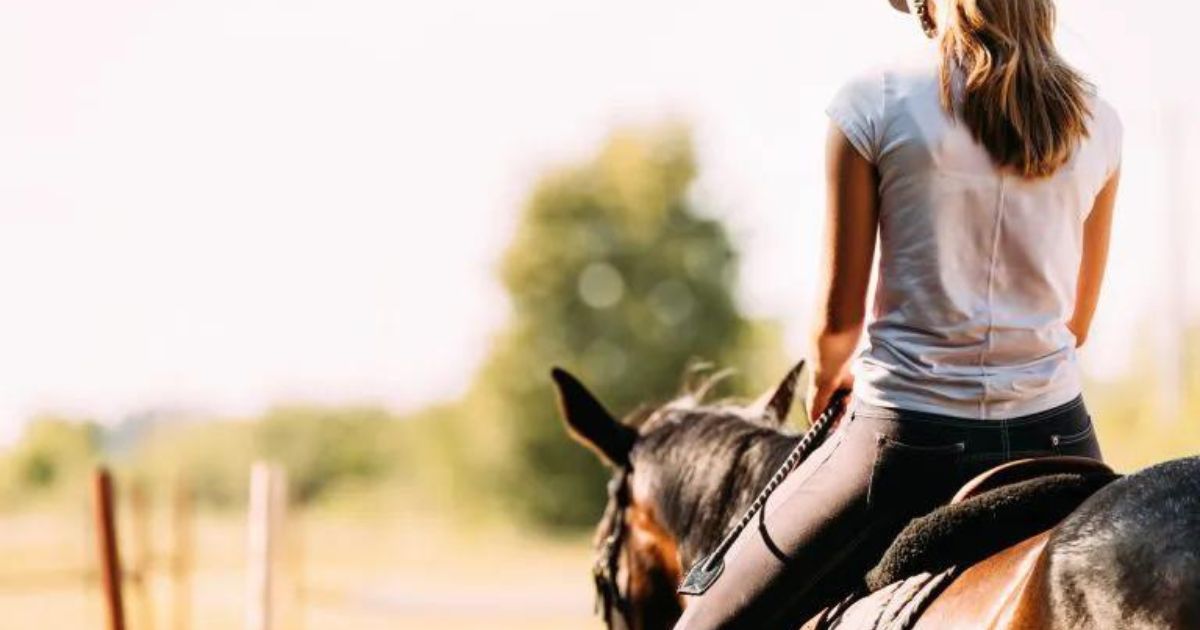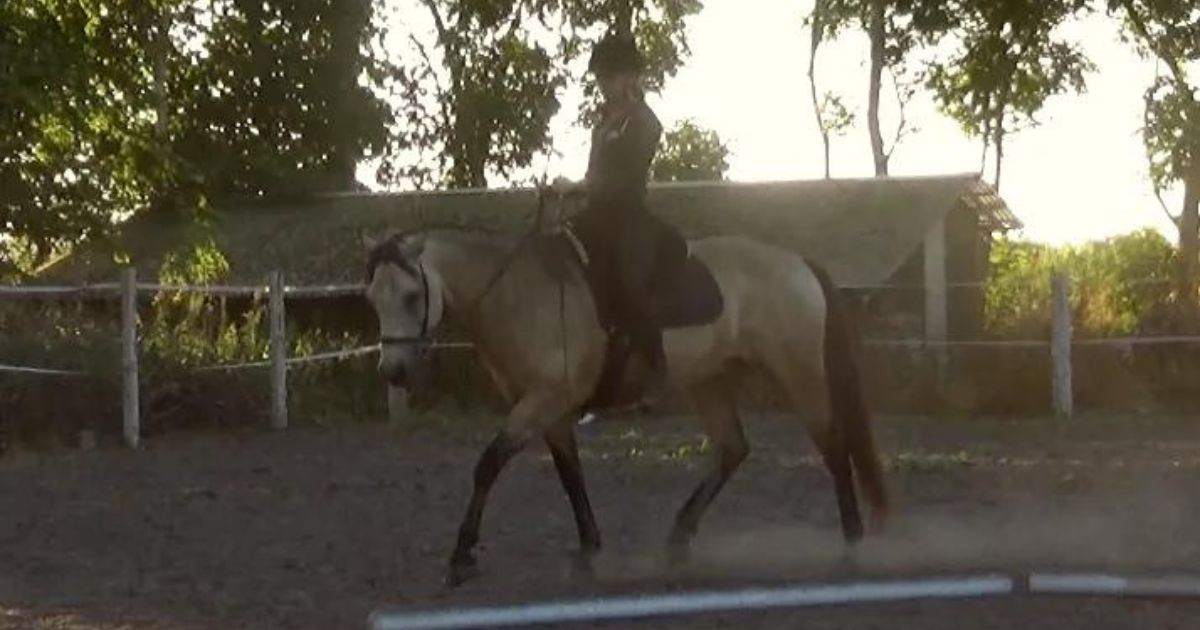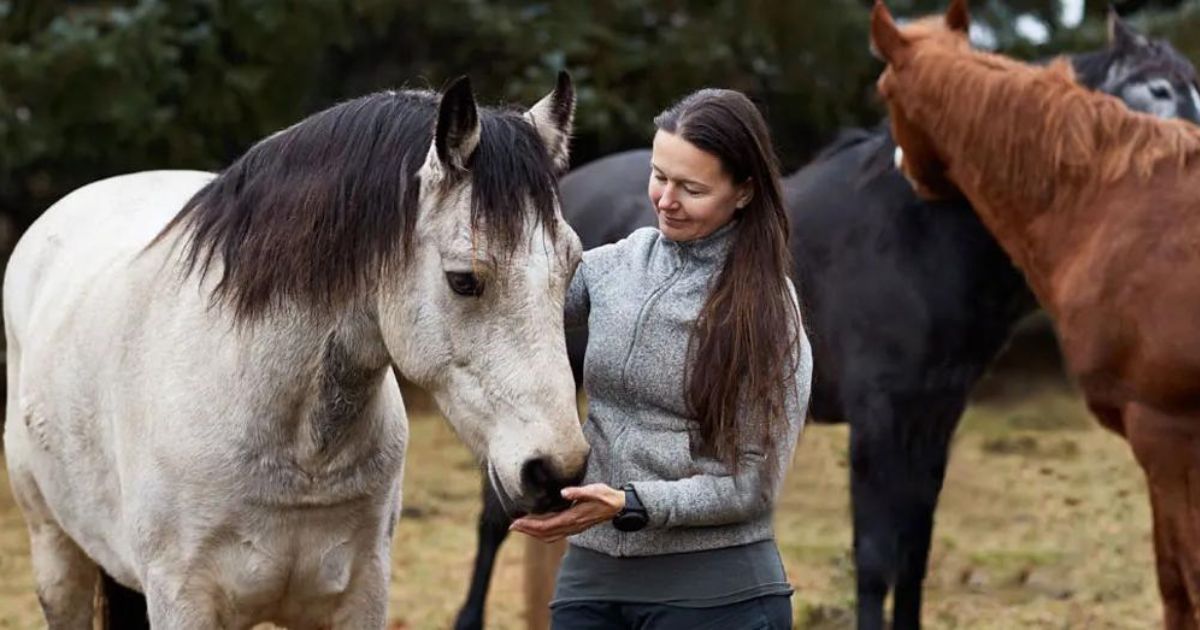Menu

Do you know the feeling of leaning inward with your upper body and hanging over your horse's inside foreleg when riding a volte? Have you considered that your crooked seating might be due to your horse being out of balance and not necessarily because of poor posture?
When a horse moves out of balance, it physically carries more weight on its inside foreleg. The horse will tense its inside shoulder and back muscle to maintain balance, and if we're not careful, this will cause the saddle and our pelvis to be pushed to the side.
We spoke with Christina Holmbæck, who has taught for over 16 years. Her concept, "Ridekunst med lethed" (Equestrian Art with Ease), is based on equine biomechanics and modern learning psychology.
Read also: Kinesiotaping – More than just tricks?
According to Christina, most riders focus a lot on not leaning too far forward or backward in their upper body. Few pay attention to whether they actually sit straight over their horse, but this is crucial for the horse's training.
Failing to notice that your pelvis has been pushed out leads to bending at the waist and leaning inward to maintain balance. When we're not balanced, we prevent our horse from using its topline correctly, so posture is one of the first things Christina focuses on when teaching.

"The most important thing is to become aware that you're sitting crookedly, and then how to correct yourself, so you can help your horse regain balance," explains Christina.
Your posture is crucial for whether your horse can move in balance and use its back and hindquarters correctly.
Read also: Warmblood horses have 4.6 times higher risk of back problems
Your crooked posture can be a symptom of your horse not being in balance. But your horse's imbalance also has another, crucial consequence. The tension in your horse's shoulder and neck prevents it from reaching forward and down correctly. Therefore, it's vital to correct yourself before you try to encourage your horse to reach down.
"It's unfair to try to make the horse lower its neck as long as it's not in balance. We can't ask the horse to relax its neck and reach forward and down until the rest of its body is in balance," says Christina.
The first and most important step is to actually become aware that you're being pushed out and not fall into the trap of leaning your upper body into the volte. The quicker you can correct your seat, the better odds you give your horse to come into balance.
You might initially find it hard to feel whether your pelvis is balanced. The imbalance affects your entire body, so a good tip is to start from the top:

You can correct your pelvis by stepping down into the inside stirrup, so your saddle lies straight again. If your horse loses balance when you adjust the saddle, do it in the halt. Once you've adjusted your saddle, think down into your toe and straighten your shoulder, so your nose aligns with your navel.
"Many riders are surprised when they're told to step down into the inside stirrup to sit straight again. It's because they haven't yet felt that their saddle and pelvis have fallen out. To show them how crooked they're sitting, I have them feel with their fingers between their lowest rib and hip bone, so they can feel that the distance is much smaller on the inside than on the outside," Christina shares.
Remember to relax your legs, and sit so your weight is on your inner thigh, not on your hamstring. When you're balanced in your seat and relax your legs, you give your horse room to lift its back.
Read also: Flexibility exercises for the older horse
It might be easier to sit straight if you look out through your horse's ears. Our body tends to follow where our gaze goes. It's much easier to become aware of your posture when looking straight ahead, rather than looking down and into the volte.
It's completely normal to need to adjust yourself many times initially until your horse regains balance in its forelegs. However, it's crucial to correct yourself every time you're pushed out. If you consistently do this, your horse's balance will improve, and you'll need to correct your posture less frequently.
Consider placing a sticker at the center of the foremost point on your saddle, so you can look down and check that you've adjusted your saddle far enough towards the center of the horse. Another way to check the saddle's position is to feel with your hand behind the saddle while the horse stands still. The saddle chamber should be placed right over the horse's spinal column.
Try riding without a saddle, if possible. Be sure to sit on a thick pad or a saddle pad to protect your horse's back. This spares your horse's back from the constant adjustments needed to realign the saddle.
Riding bareback is a perfect way to train your own balance. It's practically impossible to sit crookedly AND relax without falling off. Therefore, you quickly become conscious of needing to straighten up again.
Read also: Balance, strength, and flexibility. Should your horse do pilates?
If you're used to sitting crookedly, it may feel awkward to sit straight for a while. Therefore, initially, you shouldn't rely solely on your feeling, but rather check by starting from the top of your riding helmet.
The goal is for you to sit relaxed over your horse, but until both of you are balanced, you may need to stabilize your posture by tensing as little as possible, but as much as necessary, to sit straight.
Until your horse is balanced, it's more important that you sit straight over your horse than being relaxed. Frequently test your horse's balance by trying to relax from the navel down, sit upright in your torso, and see if you can stay straight or if you're immediately pushed to one side.
The imbalance may originate from either you or your horse. But as long as you sit crookedly, you perpetuate the imbalance, and your horse will never achieve balance.

So, Christina's best advice is: “Focus on your posture for 14 days or more, until you automatically correct yourself when you sit crookedly. Ride with long reins and in large arcs by taking contact with one rein at a time. Concentrate all your focus on your posture and notice what happens to your horse's movement when you sit relaxed and balanced.”
“And remember the most important thing: to breathe,” concludes Christina.
Read more about Christina Holmbæck's concept “Ridekunst med lethed”(Equestrian Art with Ease) here.